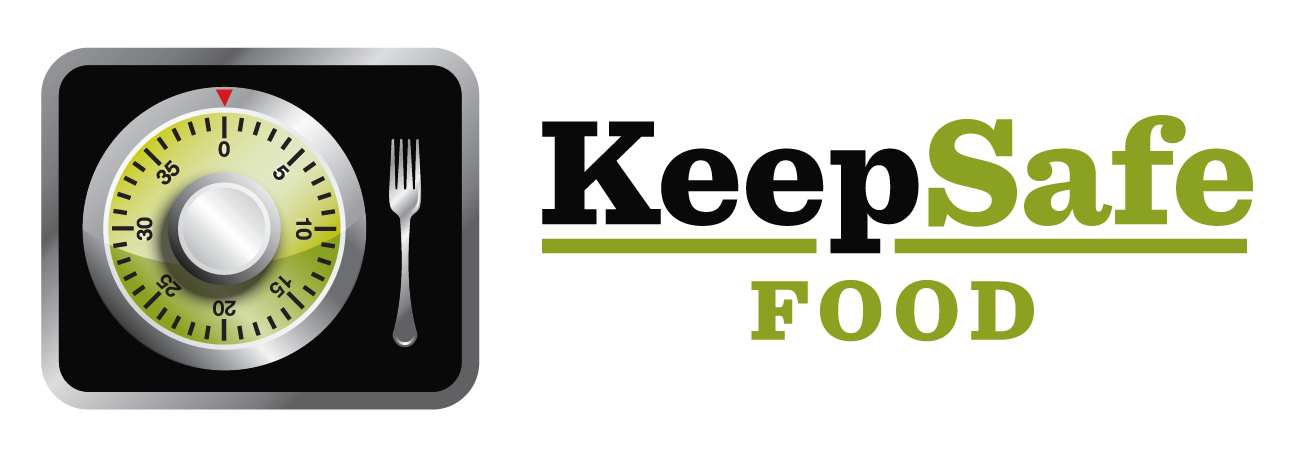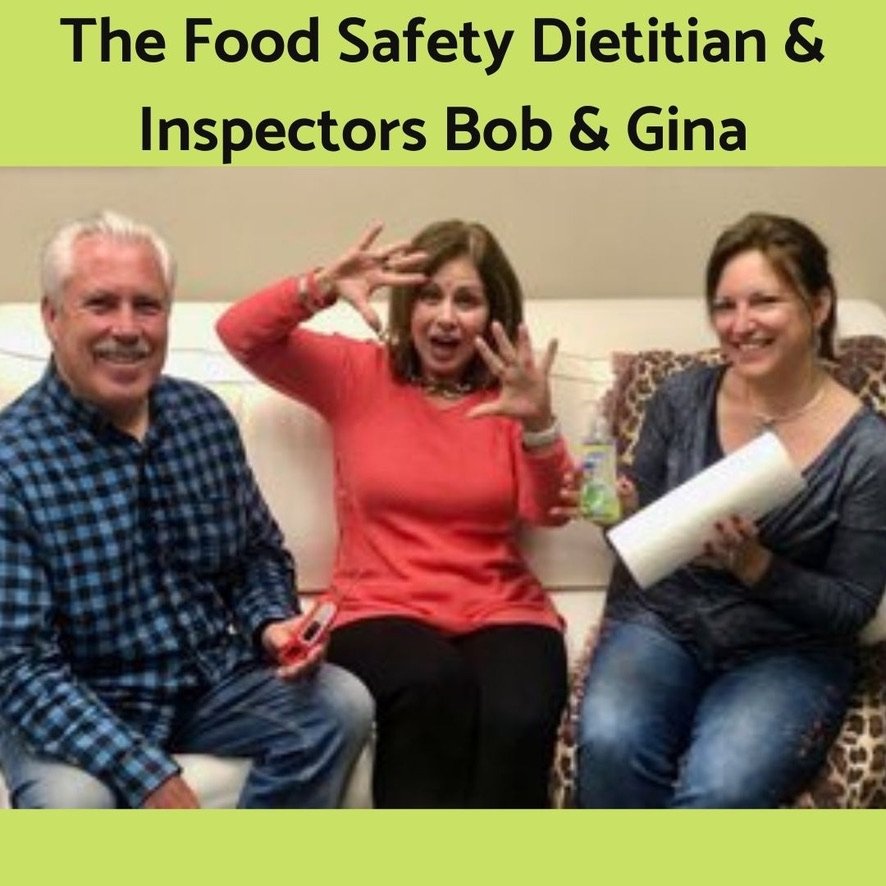OH NO! What if the Health Department Inspector showed up at YOUR home for Thanksgiving Dinner?
What wouldn't you want them to notice?
Where wouldn't you want them to look?
Who wouldn't you want them to sit by?
What wouldn’t you want them to eat?
I asked a dozen friends these questions and then ran their answers by Bob Kramer, former Supervisor of Food Safety for Columbus Public Health Department and Gina (Nicholson) Kramer who served as Food Safety Director for Kroger’s and NSF International. It doesn’t get any more expert than this.
Let’s find out which of these situations would most rattle an inspector, and which might not be as unsafe as you thought. Would the health department inspector give your kitchen Pass or place you on Probation?
And, if you’d rather listen to a summary, check out Guess Who is Coming to (Thanksgiving) Dinner at the Secret Life of Dietitians Podcast.
This post was originally published in Pre-Pandemic 2019. Oh what we’ve learned since then! Gina and Bob have sold Savour but are still engaged in making your dining space a better place to eat. The world is adjusting to Covid celebrations, yet their expert advice is just as, if not more so, relevant today.
What wouldn't you want them to notice?
My dietitian friend said she wouldn’t want them to notice the Air Freshener Spray Mist her mother-in-law has installed in the kitchen. “My M-I-L insists it’s OK, because…it’s just mist.”
Inspector Gina: The potential for cross contamination of food with chemicals is definitely cause for concern.
I was curious about this, so I looked up the ingredients for a popular brand name mist spray: Isobutane, Propane, Isoalkanes and Acetone. Personally, I’d pass on this recipe.
An all-natural acquaintance mentioned the Inspectors might find an unlabeled chemical bottle, because she mixes her own sanitizer.
Inspector Gina: Label it. Label it. Label it. Guests may want to help out in the kitchen. Don’t take a chance on them guessing what’s inside.
Rating: Chemical Contamination Risk: Probation
I don’t want to implicate any particular friends as particularly unsanitary, so I’ll combine a few of their reported practices related to personal hygiene while preparing the feast:
“What would they say if they noticed that I cook barefoot, have an open can of beer on the counter, I don’t use gloves and I’ve pressed the TV remote control a gazillion times switching between games and parades?”
Inspectors Bob & Gina:
Bare feet: Hope you selected a pumpkin shade for your pedicure. Pass
Open beer: Better offer us one. Pass
No gloves: For any ready to eat foods, that won’t be cooked before being eaten (salads, cubed cheese, veggie appetizers) use deli tissue, tongs anything but bare hands. Otherwise: Probation
Smudged remote: Likewise. Try not to touch it after handling raw foods. Keep some tech safe sanitary wipes handy to wipe it down.
Where wouldn’t you want them to look?
My cousin confessed she’s afraid to see what’s hidden behind her to the countertop appliances, which haven’t budged in a century.
Inspector Bob: Crumbs might attract insects and vermin (squeak) so should be cleaned up periodically, they are not of highest priority today as they don’t present an immediate food safety risk.
Rating: Cleanliness & Sanitation Risk: Pass
Every friend with an attached one hoped the inspectors “wouldn’t look in their garage.” Why? Because they use it for storing pies, desserts, casseroles, anything they don’t have room for elsewhere.
Inspector Bob: The big question is what is the temperature in the garage? If the food should be refrigerated then the garage temp should be 41° F or below. Use coolers with ice instead
Rating: Temperature Control: Pass or Probation…depending on the weather.
KeepSafe Food is giving away a free thermometer for your garage or cooler, with any order while supplies last. Even a stocking stuffer fridge magnet earns you a free thermometer.
Who wouldn't you want them to sit by?
“My aunt and uncle. The ones who fork feed their dog (I’ll call him Max, to protect his innocence) under the table.”
Inspector Bob: Pets are considered family members, guests rather than animals. Still, I would try to make sure your relatives keep their utensils to themselves.
Food Safety Rating Not applicable. We inspect the facility, not the patrons.
What wouldn’t you want them to eat?
A novice baker friend confessed: “My apple pie.” My knife skills are questionable, and I slivered a piece of skin while paring the apples.
Inspector Gina: If you cook the pie to the recommended temperature, it will be safe to eat and contain a bit of extra fiber.
Rating: What we don’t know, we can’t tell.
What’s on the Inspectors’ checklist that should be on yours?
Bob and Gina reminded me that the goal of their guidance is to educate not reprimand. Here’s what I didn’t ask about, but they and I would like you to know:
Thaw safely
The safest way to thaw a turkey is in the refrigerator.
Leaving it on the counter, running it under cold water or cramming it in your microwave are messy, time consuming and dangerous.
So please don’t buy a frozen turkey the night before and expect it to be oven ready the next morning
A general rule of thumb:
Allow 24 hours in the fridge for every 4 pounds of turkey
That’s 3 days for a 12 pound turkey
What if, through no fault of your own, you are placed in a frozen turkey situation? You can cook it from its frozen state. Williams Sonoma offers sound advice on how to do so.
Do not wash or rinse the turkey.
Washing a whole turkey is an awkward task. It often results in splashing germs all over your kitchen and serves no real purpose because you are going to cook the turkey to decimate any germs present. Visit the National Turkey Federation if you want detail on germs that prefer poultry. Speaking of germs, did you notice them as décor on Bob and Gina’s office wall?
Check temperatures with a good thermometer like this Lavatools Javelin Thermometer. The one Bob is wielding in the photo. Using one ensures your turkey is done but not overcooked.
For turkeys, Butterball recommends
180 ° F in the thigh
170 ° F in the breast
165 ° F in the stuffing
Both the turkey and stuffing cook more quickly if cooked separately. If you cook the stuffing inside, be sure to insert the thermometer probe all the way into the stuffing when checking its temperature.
Be on the lookout for guests who arrive sniveling or wiping their kids’ noses. There are just so many moving parts to a Thanksgiving feast that even the most well intended may lapse on hand hygiene at this busy time of year. You can send a sick employee home, but not a guest. But you can pass on tasting their donation.
Where do Inspectors celebrate the holiday?
How will Gina as Executive Director and Bob as Vice President of Savour Food Safety International, A Matrix Sciences Company celebrate Thanksgiving while maintaining peace of mind? They host!
Speaking of which, I gifted Bob with the Javelin Thermometer. There’s one included in each KeepSafe Food Deluxe Food Safety Kit which would make a unique holiday hostess gift.
BTW: Did you catch what was on the Inspectors’ reception room wall? Germs as art!



